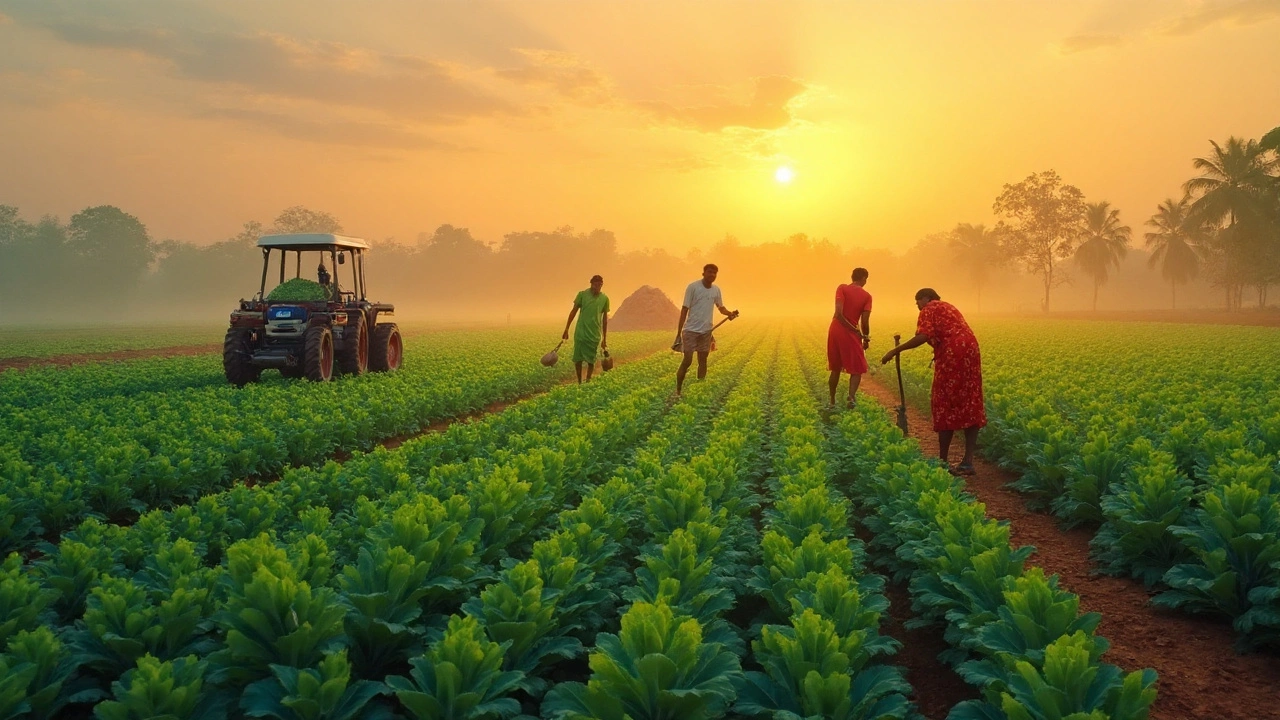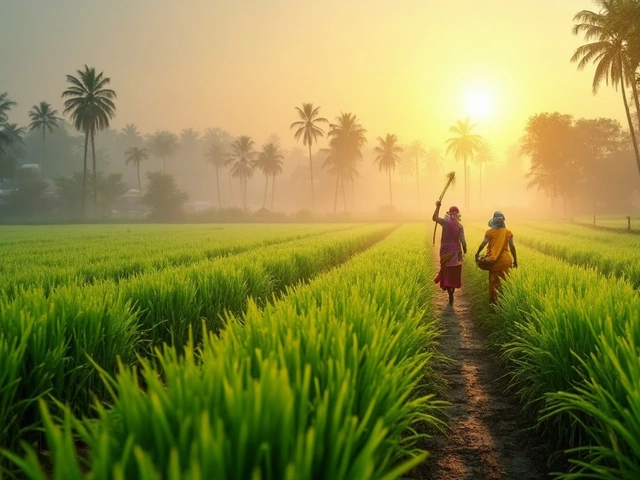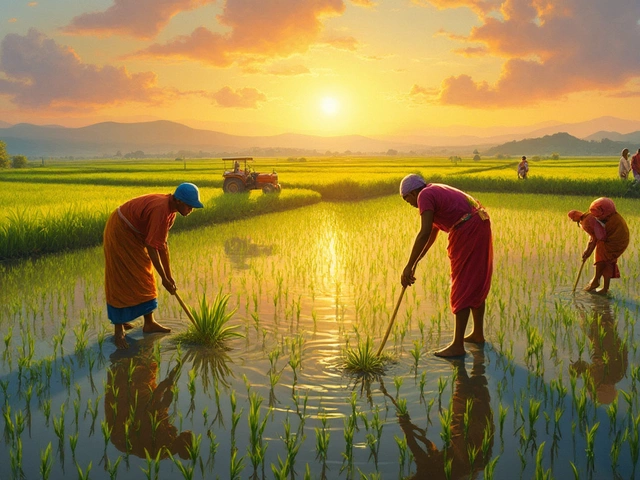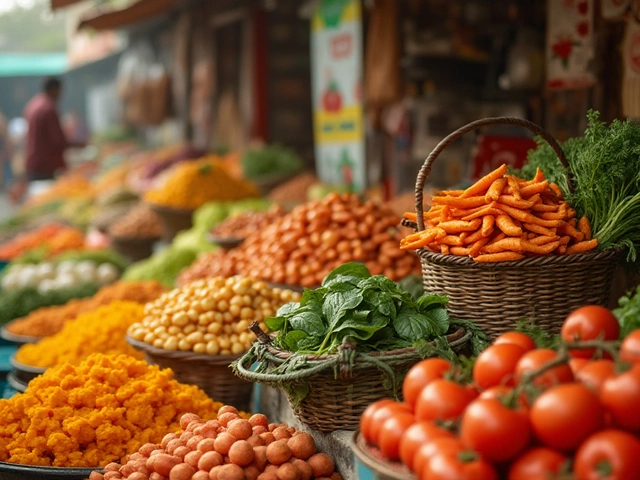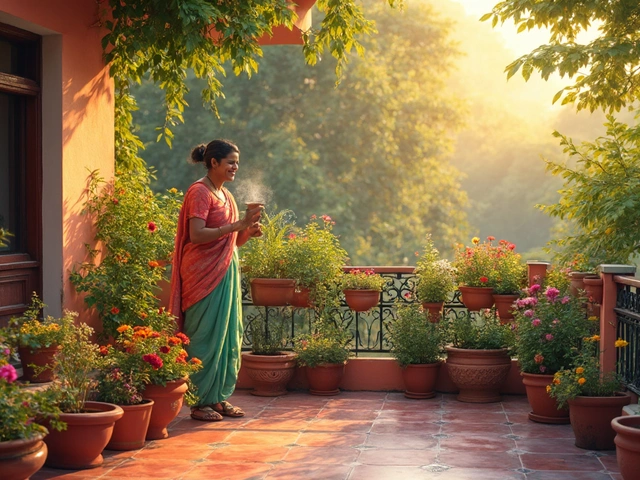Ever seen a field of lush green broccoli heads under the sun and wondered if farmers are actually making money from it? Broccoli isn’t the usual vegetable you’d find in a rural Indian bazaar. It’s got this reputation for being a fancy, healthy veggie—one often served up to kids who turn their nose up at hospital-green florets. But how does it fare in the ledger for those who actually plant it in Indian soil? The talk around profitability gets thrown about, but the real answers hide in the details—like where you grow it, who buys it, what it costs to get it on the table, and how much work you want to put in. The Indian broccoli scene looks way different now than it did a decade ago. Some call it a goldmine, others think it’s a risky bet. So, what’s really going on in the fields, markets, and kitchen tables when it comes to broccoli farming in India?
The Surprising Rise of Broccoli Farming in Indian Fields
For the longest time, broccoli wasn’t on the radar for most Indian farmers. Cabbage, cauliflower—sure, those were safe bets. Broccoli? Too Western, too snobby, too unfamiliar for the regular thali. Then, things took a turn. Cities started filling up with health-conscious folks swapping aloo for steamed greens. Five-star hotels put broccoli on menus by default. With this shift, savvy farmers—especially in states like Maharashtra, Himachal Pradesh, Karnataka, and Punjab—started experimenting with the crop. Want a wild fact? In 2010, India imported about 90% of its fresh broccoli; by 2024, home-grown broccoli supplies almost the entire demand, and exports are just starting to pick up.
Climate plays a big part. Broccoli loves cool, slightly moist weather—a reason why you’ll find big farms in the foothills of the Himalayas and also on high ground in the Deccan Plateau. Another neat point: broccoli yields best at about 15-25°C temperature. Move much hotter, and the heads get tiny or bolt to flower. If you try planting it in the middle of a Punjab summer or Chennai’s heat, you might as well plant sand instead. The cool thing? Some farmers in North India have smartly shifted their sowing to monsoon’s tail-end, so they get perfect growing weather from October to February. Ever practical, Indian farmers quickly learned to grow and harvest broccoli in cycles that dodge the worst extremes.
Urban demand is a rocket booster. Cities like Delhi, Mumbai, Bengaluru, and Hyderabad have changed the game. In 2015, the price for farm-fresh broccoli hovered at ₹40-60 per kilo. By mid-2025, it’s soared past ₹100 in some retail outlets, though market rates for farmers typically stay in the ₹35-70 range, depending on where and when they sell. Even smaller towns now see broccoli pop up in weekend veggie markets, pushed along by YouTube cooks and local Instagram chefs.
Seeing these trends, agriculture departments in Maharashtra and Punjab have offered free or subsidized seedlings, drip irrigation setups, and crop insurance—especially for young, first-time farmers. Experimental plots in places like Nashik recorded yields up to 250 to 300 quintals per hectare under good conditions. It’s not fantasy—government horticulture reports back it up. Suddenly, more people want in.
Profit Math: Costs, Yields, and Market Nuances
The first thing hopeful broccoli farmers ask—how much cash can you actually make? Let’s break down the rupees, because profit isn’t just seeds-plus-harvest-minus-labor. First, land: if you own your land, great! If you’re renting, especially close to metro areas, you’re looking at ₹15,000-30,000 per acre per season just for rent. Seeds set you back ₹8,000-12,000 per acre for good hybrid varieties (like Palam Samridhi or Green Magic), but reliable germination and high yields make it worth it.
Broccoli is thirsty but also hates waterlogging. Drip irrigation works best. Setting up even basic drip lines across an acre usually starts at ₹20,000-25,000, although government subsidies can chop that cost in half. Fertilizer and pest control are less than with traditional cabbage because broccoli faces fewer major pests, but you’ll still budget ₹8,000–10,000 for nutrients and an occasional pesticide spray. If you live where wild boars or cows roam, expect to pay something for fencing.
Labor is the kicker. Broccoli harvest has to be done by hand when the florets are tight and green. Too early, you lose weight; too late, they go yellow and unsellable. The harvest window is narrow—sometimes just 2-3 days per patch. Sorting, packing, and hauling to local markets require extra hands. Plan for three to five workers per acre, for at least 15 days through planting, maintenance, and harvest. In the end, all costs considered, a careful, efficient farmer might spend up to ₹55,000-80,000 per acre over a growing season.
Now here comes the sweet part. Yields under good management can reach 12-15 tons per acre in Punjab and Maharashtra. North Indian farmers with extra-cool winters report even better numbers when using disease-resistant hybrids. If you sell broccoli fresh and direct to city vendors, you might regularly fetch ₹40-60 per kg if your quality is high. If you rely on middlemen at mandis, they might drop it to ₹30-40, but you lose less to spoilage. On a good season, some farmers clear a neat ₹1-1.5 lakh per acre before labor and land rent. The real jackpot comes when you have an organized group, or better—your own cold chain, which lets you supply to supermarkets, hotels, or export houses directly.
But there’s a flipside. If heavy rain hits near harvest or local markets get glutted, prices can crash fast. Storage is tough—broccoli deteriorates quickly in the Indian heat, so without refrigeration, you’ll lose crop unless you sell fast. The first-timer who doesn’t time their harvest or can’t find buyers can end up with unsold heaps, good only for compost. Bottom line? Broccoli does pay—but it pays those who plan and hustle.
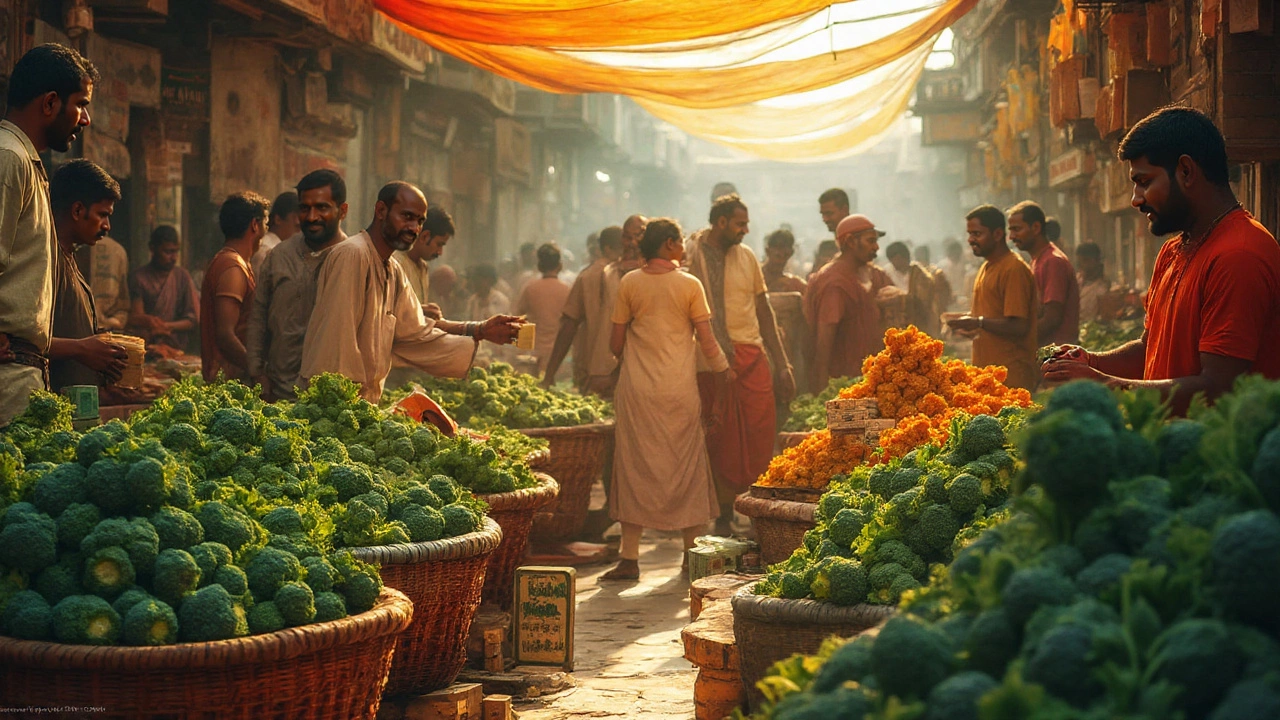
Market Trends: Where Does All That Broccoli Go?
Broccoli grown in India now goes to way more places than it did just ten years ago. Back then, it was a hotel and expat food. Now, middle-class homes in cities, health-conscious millennials, restaurants, and even some schools ask for it by name. Guess why? Everyone’s on a health kick. Doctors, fitness YouTubers, and dieticians keep saying—broccoli’s a fiber giant, loaded with vitamin C, folate, and antioxidants. Some call it a ‘superfood for immunity’ (sounds like broccoli marketing, but it’s not wrong).
The best markets by volume are large North Indian cities or tier-1 towns with solid cold-storage chains. Delhi NCR alone eats up almost half the country’s fresh broccoli output in winter. Mumbai and Pune are catching up, especially since farm-to-retail chains like Nature’s Basket or Big Basket started sourcing directly from clusters in Nashik and Kolhapur. Down south, Bengaluru’s demand is steady year-round, thanks to cosmopolitan diets.
Export is a newer game. Companies in Pune and Bangalore have started exporting broccoli to UAE, Singapore, and Oman. The process isn’t simple—export buyers want perfect heads, consistent size, and zero pesticide residue. For those who master the logistics—clean washing, fast cold-chain, vacuum packaging—the profit margins go through the roof. Data from APEDA in 2024 showed Indian broccoli worth over ₹15 crore was exported, with export prices near ₹130 per kilo, though only farmers in big clusters with solid logistics snag those deals.
On the other end, the street vendor and local mandi buyer look at price and reliability. That’s why some farmers band together to form cooperatives. With collective bargaining and shared transport, they pocket way more profit per kilo. Members in Himachal Pradesh formed WhatsApp groups with restaurant managers to coordinate scheduled weekly supplies—less wastage, steady income, zero leftover crop.
One overlooked but growing market: the processed food sector. Frozen broccoli florets packaged for city supermarkets fetch nearly twice the price of fresh, especially in the off-season. Big food companies like ITC, Mother Dairy, or Godrej Agrovet now buy broccoli directly from farmer clusters, especially when gluts drop fresh prices. Farmers with on-site or shared cold storage, or access to small-scale freezing units, have a safety net even when the fresh market dives. If you can clean, cut, and freeze, suddenly your broccoli has a whole new shelf life and audience.
Real-Life Tips From Indian Broccoli Growers
Brokers and agro-experts give theoretical advice, but the farmers actually in the muck give the best lessons—often learned by trial and error. Here’s what they say after several seasons:
- Start small if you’re new. One or two acres max for your first season. It lets you learn local weather quirks, soil issues, and market links with limited risk.
- Seed choice is game-changing. Imported seeds are pricey but reliable (Green Magic, Marathon, Fiesta), while Indian hybrids like Palam Samridhi or Pushkar do well in North India and cost half as much.
- Pest control isn’t a nightmare, but cabbage borers and aphids pop up, especially after rainy spells. Rotate crop families, avoid back-to-back broccoli, and use neem-based sprays or pheromone traps to control outbreaks. Avoid heavy pesticides near harvest if you want to sell for export or to health-conscious markets.
- Water right. Drip irrigation keeps leaves dry and roots moist, minimizing rot. Overhead sprinkler systems invite disease. Mulching with straw or old leaves conserves water and stops weed growth.
- Fertilizer timing matters. Broccoli is a heavy feeder in its first six weeks. Use well-rotted manure, add nitrogen-rich fertilizer, and don’t skimp on boron—low boron leads to hollow stems and unsellable heads.
- Sell before you harvest, not after. Line up buyers a week before you cut. Use photos, WhatsApp messages, or join an FPC (Farmer Producer Company) to connect with regular clients.
- Post-harvest handling is key. Quick-chill the heads if possible. Pack in crates, keep out of sun. Even simple tarp shading during market transport can extend shelf life by a crucial day or two.
- Stay flexible. If monsoon runs late or buyers drop prices, consider quick-pickling florets or talking to local hotels about taking wonky-shaped heads for kitchen use.
One farmer from Solan, Himachal Pradesh, once joked with me that his first broccoli crop sold out not because of taste, but because he drove it himself to three different school canteens and ‘taught’ the cooks how to use it. The moral? Growing it is half the job—selling it is the real art.
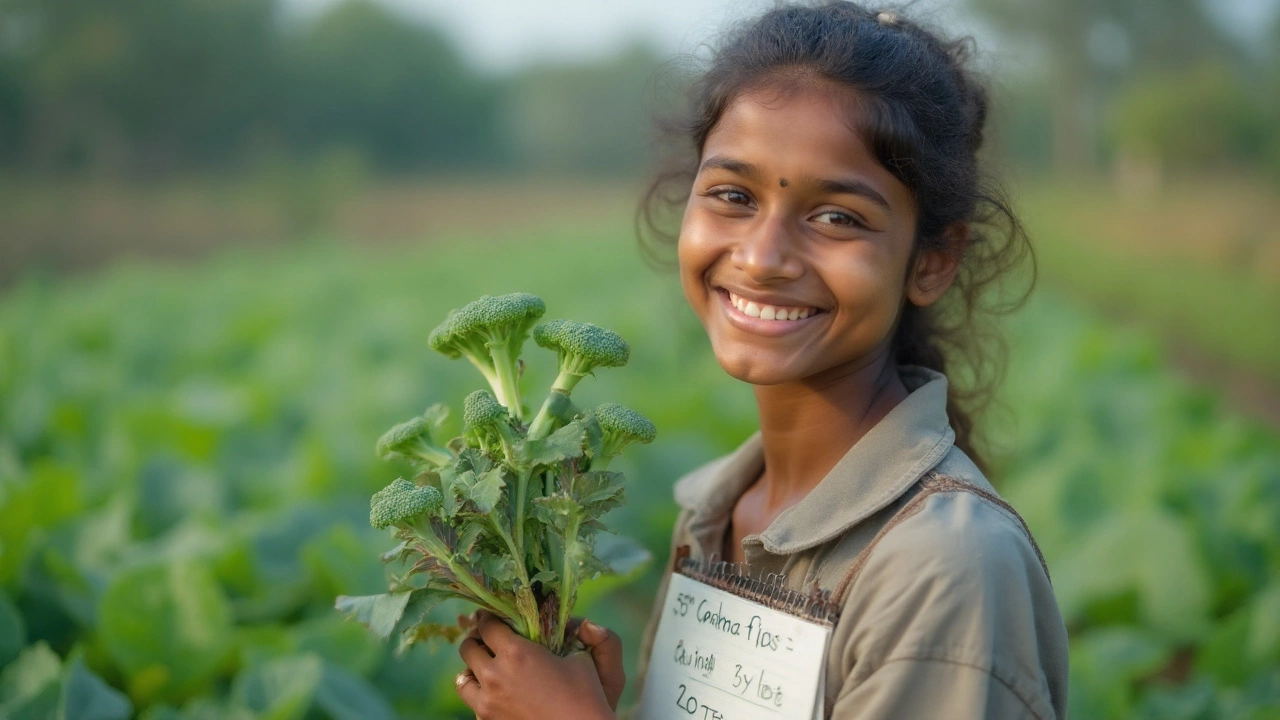
Future of Broccoli Farming in India: Next Steps, Big Dreams, and Real Risks
If the last few years are any hint, broccoli farming isn’t just a flash-in-the-pan health food trend. It’s becoming a steady income crop for bold Indian farmers who read the market right. New processing plants are coming up around Nashik and Bengaluru. Agritech startups offer instant soil testing and WhatsApp market rates. Young city-bred folks, some with zero farming background, rent farmland on city edges and start with broccoli because the learning curve is manageable and market links can be built fast.
People also care more about their food’s story. Branding organic or chemical-free broccoli can double the price in places like Gurgaon or Mumbai, if you have credible certification. Eco-conscious packaging—biodegradable baskets, eco-labels—also fetch premium rates at city weekly markets or with online grocers. I once saw a box labeled ‘no-pesticide broccoli from young farmers near Pune’ sell out in 15 minutes at a local organic bazaar—admit it, that’s marketing gold.
But let’s not sugarcoat the hurdles. Weather is always a dice roll—unseasonal rains or heatwaves can wreck a crop in days. Broccoli’s short shelf life means logistics are king; bad roads or transport delays can turn your crisp green heads mushy before you reach market. The volatility of fresh produce prices (one day it’s ₹70 per kilo, the next it’s ₹25) still scares off many. Plus, broccoli isn’t as drought-hardy as some desi crops; secure water is a must.
The good news? For those who plan ahead, stay nimble, and focus on direct marketing, the risks are reward-worthy. Shared cold storage, government agri-credit, and farmer collectives all ease the ride. And with broccoli’s status as a diet darling showing no sign of fading, its farm-to-fork journey gets smoother every year. My spouse, Liana, still doesn’t totally love the taste, but even she can’t argue with how much this crunchy veggie is reshaping Indian farming, plate by plate.
